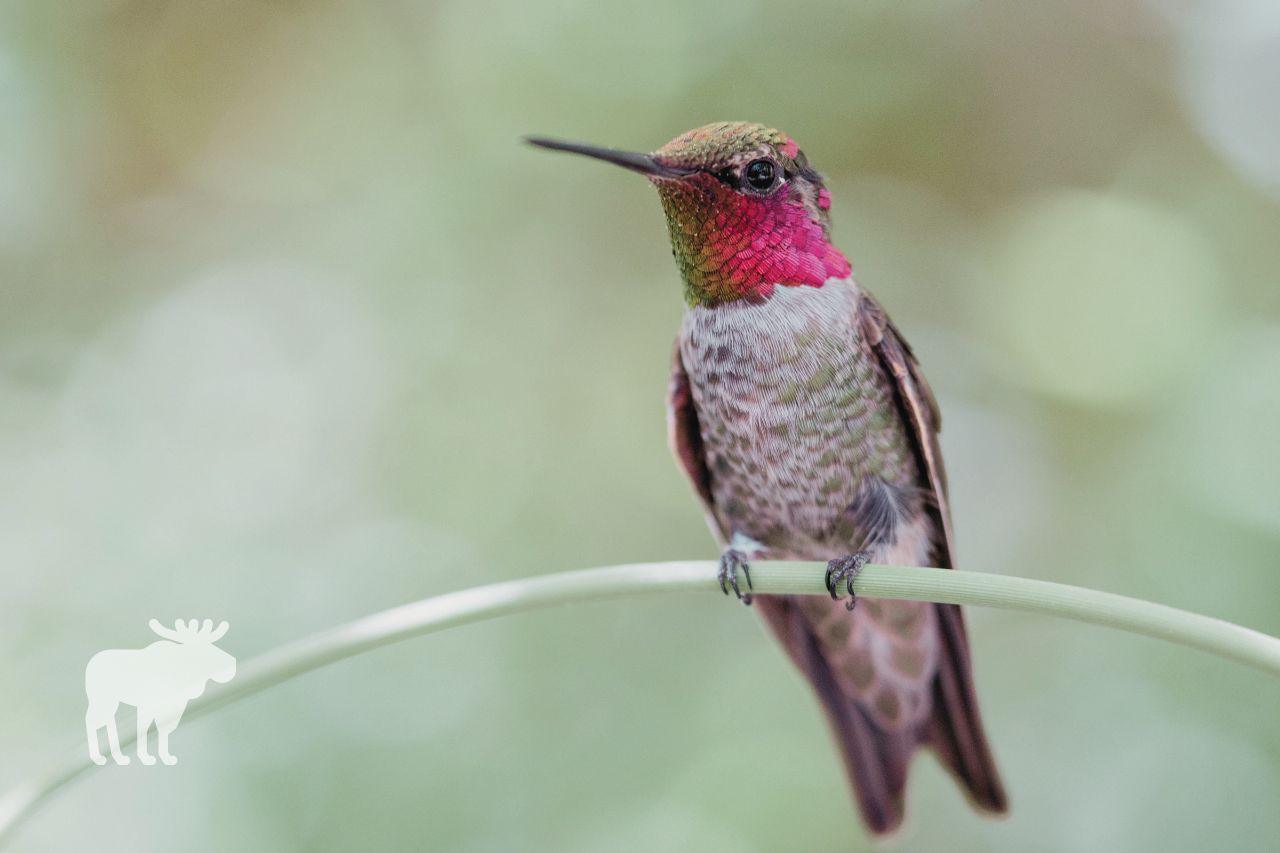Who doesn’t love hummingbirds? These tiny, shiny creatures buzz from flower to flower, drinking nectar and serving as crucial pollinators. But did you know that many hummingbirds are threatened by changes in their environment? Keep reading as we answer questions such as, “why are hummingbirds endangered?” and “what can we do to help them?”
What You'll Learn Today
Are Hummingbirds Endangered?

Before we talk about the reasons behind hummingbird endangerment, we need to answer a crucial question: are hummingbirds endangered to begin with?
There are over 300 species of hummingbirds found throughout the Americas. Most of them appear to be thriving.
However, some species are endangered–perhaps as many as 10 percent of them. Other species may become endangered over time.
Currently, none of the North American hummingbird species are endangered, though some are considered threatened. The species which are endangered are all found in central and South America; some of the species most at risk are:
- Blue throated hillstar
- Long-tailed sylph
- Esmeralda’s woodstar
However, several species not currently considered endangered are sharply declining, including some North American hummingbirds.
The Rufous hummingbird, for example, is expected to lose all of its non-breeding range by 2080, according to Audubon. The Allen’s hummingbird may lose as much as 90 percent of its breeding range during the same timeframe.
It’s unclear whether these tiny birds will be able to adapt and move to new areas, or whether they will become casualties of a changing world.
Why Are Hummingbirds Endangered?
There are three primary causes of hummingbird decline–climate change, loss of habitat, and pesticide use. Let’s take a closer look at each of these factors.
Climate Change
Climate change can affect hummingbirds in several ways.
It can cause flowers that they rely on for food to bloom at different times, forcing them to find other food sources.
Temperature swings caused by climate change may be too extreme for their fragile bodies to survive. If they are unable to migrate before the temperatures become unexpectedly hot or cold, for example, they may die.
Finally, long-term climate change may lead to extensive changes in their habitats, forcing them to either adapt to the changes or find new environments more conducive to their needs. This may ultimately lead to a loss of range if they are unable to adapt to changing conditions.
Loss of Habitat
One of the largest and most immediate threats to many hummingbirds is loss of habitat.
Many of their natural environments are being cleared for agricultural purposes. This is especially true in Central and South America where several species of hummingbirds are endangered.
If the native plants they use for nectar are cleared to make way for vast fields of crops, the hummingbirds lose much of their food source. Hummingbirds have extremely high metabolisms and can starve to death within a few hours, so if they are unable to quickly find a replacement for lost food sources, they will not survive.
What’s more, they will also lose the trees and shrubs they use for building nests. If they are unable to build nests, they will have no place to raise new generations of hummingbirds.
Pesticide Use
Any hummingbirds who try to stay in an area converted for agriculture will face another problem as well: pesticides.
Many harsh chemicals are used to keep insects and small animals away from crops. Some of these chemicals are powerful enough to kill hummingbirds directly.
Even if the chemicals don’t kill them right away, they can significantly alter hummingbirds’ lifespans. Additionally, the pesticides kill all insects in the area, which many hummingbird species use to supplement their diet.
So, not only do hummingbirds lose the flowering plants that supply much of their food, they also lose their supplemental food source and get poisoned at the same time.
What Can We Do?
There isn’t a lot the average person can do to have a big impact on climate change, and we can’t necessarily prevent large companies from clearing land for crops or using pesticides. But is there anything we can do to help with conservation efforts for hummingbirds?
The first step is awareness. Know about the threats facing hummingbirds and spread the word; as more people become aware, they will be more likely to do what they can to provide a safe haven for the hummingbirds in their area.
You, too, can provide a safe place for hummingbirds to feed and raise their young.
Take steps to attract hummingbirds to your yard: hang hummingbird feeders filled with an approved hummingbird food, or plant hummingbird-friendly flowers. These will ensure that the local hummingbirds will never run out of food as long as they remain in your area.
If you want to do even more, plant a variety of trees and shrubs around your yard–especially those that produce flowers. The hummingbirds who stop by your yard to feed may decide the trees or shrubs are ideal settings for their nests.
Steer clear of pesticide use, and make sure any pets you have are kept away from areas where they might hunt hummingbirds.
By providing all the food and shelter your local hummingbird populations need, you give them an extra chance at survival. You may be able to help prevent threatened North American hummingbird species from becoming endangered.
Check out this video to learn more about providing feeders for your local hummingbirds:
You can also get involved with local projects to study hummingbird habits. Allow ornithologists to observe the hummingbirds in your yard so they will learn more about hummingbirds and ways of conserving them.
Conclusion
About 10 percent of hummingbird species are endangered, and others are considered at risk of endangerment. The primary threats these hummingbirds face include climate change, habitat loss, and pesticide use.
You can help with hummingbird conservation efforts by planting flowers and shrubs and maintaining hummingbird feeders to attract these beautiful birds to your yard.